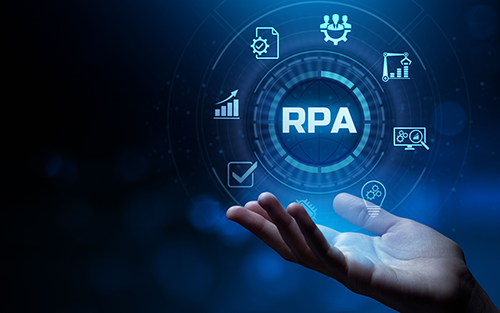- By Zac Amos
- May 24, 2024
- Feature
Summary
While RPA is often more accurate than humans, it is imperfect—overreliance can lead to critical security-endangering mistakes.

Robotic process automation (RPA) has quickly become standard in many industries. It is easy to see why, too, given how much time businesses can save by automating repetitive software tasks. However, this rapid adoption can also lead organizations to overlook RPA’s security risks.
While RPA is often more accurate than humans, it is imperfect—overreliance can lead to critical security-endangering mistakes. As businesses apply it to workflows, cybercriminals may access or damage more by targeting a single RPA solution. Consequently, RPA security is essential. Here are seven best practices to ensure it.
1. Choose RPA tools carefully
RPA security begins with development. Businesses building their proprietary solutions should embrace practices like DevSecOps to ensure cybersecurity by design. Those using off-the-shelf products must narrow their options to trusted developers.
Companies should inquire about developers’ security practices before trusting an RPA solution. Software supply chain attacks have affected 91% of organizations, meaning they must review any dependencies and code sources. Ideally, RPA suppliers should meet widely recognized standards like the ISO 27000 or NIST SP 800 series.
2. Rethink RPA use cases
Just because an organization can automate a process does not always mean it should. A more conservative approach to automation will minimize the data and systems an RPA-targeting attack or error can affect.
While human error is responsible for 95% of cybersecurity issues, automation is not immune to mistakes, especially when human errors like misconfiguration affect its accuracy. RPA can generally improve security in predictable, data-heavy tasks but may increase liabilities in those that vary often or contain susceptible information.
3. Limit bot access permissions
A similar step in RPA cybersecurity is to limit what these solutions can access. Companies must apply the principle of least privilege to bots just as they would to human users.
RPA tools should not have access to any data that does not affect their operation, even if it is adjacent to their work. A hospital may automate Alzheimer’s diagnoses because automation maintains 99.95% accuracy, but it should not let these tools access patients’ names. These restrictions are easier to implement when using several purpose-built RPA tools instead of one comprehensive system.
4. Limit user access
Of course, organizations must also extend these limitations to their users. RPA is safer when fewer people can access and potentially misuse it.
Relatively few employees need access to an RPA solution’s inner workings. While many teams may use these tools, they do not need to configure or otherwise control them, as the point of RPA is to work autonomously. Only the IT specialists in charge of this software should be able to employ more than its basic functionality.
5. Implement strong authentication measures
It is important to recognize that strict access controls only work when paired with robust authentication mechanisms. This applies to both the RPA solution itself and human users.
Multi-factor authentication is the best way forward for users. Biometrics can work well, too, but it is possible to steal biometric data, and users cannot change it if that happens. As for the bot itself, cryptographic keys and similar methods based on unique bot identities are ideal.
6. Keep detailed logs
Even if businesses follow these other RPA security methods, breaches and errors can still occur. Consequently, organizations must ensure traceability and transparency in these systems. That means storing detailed log data on all RPA actions to enable more in-depth audits and post-incident investigations.
Businesses must also store log data on a separate system from the RPA solution. This segmentation preserves record integrity and minimizes damage in a breach.
7. Monitor RPA solutions
Finally, RPA security must be monitored continuously. Some security flaws may not be immediately evident, and some breaches require instant attention to stop the bleeding.
Further automation is a must in this area. Organizations using security artificial intelligence and automation save an average of $1.76 million in data breach costs, largely because it enables faster responses. However, businesses must also remember to apply all the above steps to these automated monitoring solutions.
RPA security Deserves more attention
Failure to recognize RPA’s security risks is a dangerous oversight. As helpful as these tools are, they are only worth it if users can use them without jeopardizing their security.
These seven steps will help organizations ensure the security of any RPA system. They can then implement automation to its full potential, safe from unnecessary risks.
About The Author
Zac Amos is the features editor at ReHack, where he covers trending tech news in cybersecurity and artificial intelligence. For more of his work, follow him on Twitter or LinkedIn.
Did you enjoy this great article?
Check out our free e-newsletters to read more great articles..
Subscribe